Raising boost on a 2JZ engine is like walking a tightrope — thrilling but risky if you don’t know what you’re doing. This legendary engine is tough, no doubt, but pushing it beyond its limits without proper care can lead to costly damage. So, how do you safely increase boost without turning your powerhouse into a paperweight?
First off, understanding boost pressure is key. Boost is simply the amount of extra air your turbo pushes into the engine. More air means more power — sounds simple, right? But here’s the catch: the engine can only handle so much before it starts to complain. Think of it like filling a balloon; too much air and it bursts.
Stock 2JZ-GTE engines typically come with a factory boost pressure around 11-14 psi. This is the sweet spot Toyota engineered for reliability and performance. Push beyond that without upgrades, and you risk blown head gaskets, piston damage, or worse. But that doesn’t mean you’re stuck at stock forever. With the right modifications, you can safely nudge that boost higher.
Supporting mods are your best friends here. Upgrading your fuel system ensures your engine gets enough juice to match the extra air. Intercoolers keep intake temps cool to prevent knock, and a freer-flowing exhaust helps the turbo breathe better. Skipping these steps is like trying to run a marathon in flip-flops — you might make it a few miles, but not without pain.
Next, setting up your boost controller properly is crucial. A good boost controller keeps your pressure steady, avoiding dangerous spikes or creeping boost that can sneak up on you. It’s like having a steady hand on the throttle rather than stomping on it blindly.
And never underestimate the importance of monitoring. Keeping an eye on your air-fuel ratio (AFR), knock sensor readings, and exhaust gas temperatures (EGT) is your early warning system. These numbers tell you when your engine is happy or when it’s about to throw a tantrum. Ignoring them? That’s a gamble you don’t want to take.
Don’t forget the hard parts — head studs and gaskets. Stock bolts can stretch or break under higher boost. Upgrading to stronger head studs and quality gaskets helps keep everything sealed tight, preventing leaks that can wreck your day. Also, managing compression ratio plays a big role in how much boost your engine can safely handle without detonation.
Choosing the right turbo size is another piece of the puzzle. Too small, and you’ll hit boost quickly but run out of breath at higher RPMs. Too big, and you risk turbo overspeed or surge, which can kill your turbo and engine. It’s about balance — like picking the right gear for a smooth ride.
Boost spikes and creep are sneaky problems that can cause sudden, damaging pressure changes. Often caused by poor wastegate control or leaks, these issues need quick fixes to keep your boost smooth and predictable.
Finally, ECU tuning ties it all together. A well-tuned ECU adjusts fuel delivery, ignition timing, and boost control to keep your engine safe while squeezing out every bit of power. It’s the brain that makes all the hardware work in harmony.
Remember, your fuel choice also sets the ceiling for safe boost. Pump gas, E85, and race fuels each have different knock resistance and power potential. Knowing your fuel lets you set realistic, safe boost targets without pushing the envelope too far.
In short, raising boost on a 2JZ isn’t about just cranking a dial. It’s a careful dance of upgrades, monitoring, and tuning. Do it right, and you’ll enjoy thrilling power gains without the heartbreak of engine damage.
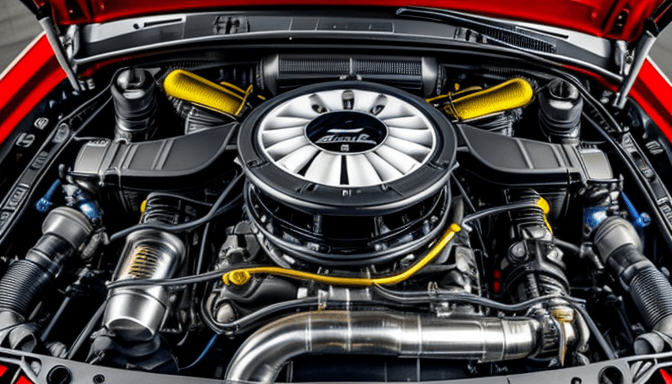
Understanding the Basics of Boost Pressure on the 2JZ Engine
Let’s start with the heart of the matter: what exactly is boost pressure, and why does it matter so much for the 2JZ engine? Simply put, boost pressure is the extra air pressure your turbocharger pushes into the engine’s intake. Think of it like giving your engine a deep breath of fresh air — the more air it gets, the more fuel it can burn, and the more power it makes. But here’s the catch: too much boost without the right setup can quickly turn from a power-up to a disaster.
On the 2JZ, a legendary inline-six, boost pressure plays a starring role in its performance story. This engine was built tough, but it wasn’t originally designed to handle sky-high boost levels straight from the factory. When you increase boost, you’re essentially forcing more air into the cylinders than they were originally designed for. This means higher cylinder pressures and temperatures, which can stress engine components beyond their limits if you’re not careful.
Imagine the engine as a balloon. Inflate it slowly and steadily, and it stretches just fine. But pump air in too fast or too much, and it risks popping. That’s why understanding the limits and behavior of boost pressure is crucial. It’s not just about slapping on a bigger turbo and turning up the dial. You need to know how your engine reacts — when it’s happy, and when it’s screaming for mercy.
Another key point is how boost pressure affects other engine parameters. Increased boost raises the intake air temperature, which can lead to detonation (or knock) if not managed properly. That’s why an intercooler and proper tuning are your best friends. They help cool the air and keep combustion smooth. Without them, you might be inviting engine damage without even realizing it.
So, before diving into higher boost levels, it’s wise to get familiar with the basics: how boost pressure changes airflow, temperature, and engine stress. The 2JZ is forgiving if treated right, but it demands respect. Boost isn’t just a number on a gauge — it’s a delicate balance of power and protection. Master that balance, and you’re on the road to extracting safe, reliable horsepower from this iconic engine.
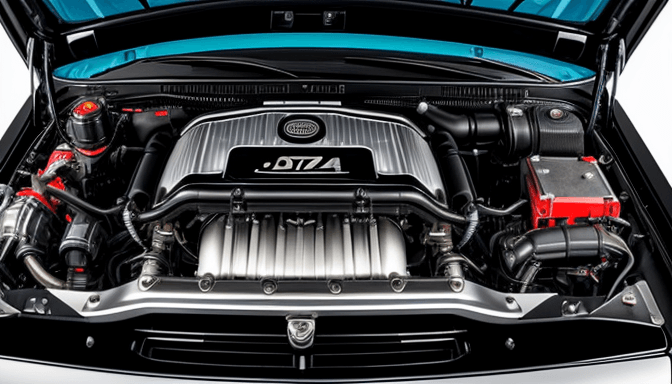
Stock 2JZ-GTE Boost Tolerance: How Far Can You Safely Go?
When it comes to the legendary 2JZ-GTE, the question of how much boost it can handle without breaking a sweat is a hot topic. The stock engine is surprisingly robust, but that doesn’t mean you can just crank the boost knob to the max and expect it to live happily ever after. Typically, the factory turbo setup runs around 11 to 14 psi of boost. This range is carefully chosen to balance power and longevity. Push beyond this without any supporting mods or proper tuning, and you might be flirting with disaster.
Think of the stock 2JZ-GTE like a marathon runner. It’s built for endurance and steady performance, not sudden sprints at max effort. You can safely nudge the boost up to about 16 psi on stock internals if your tune is dialed in and you’re running quality fuel. But beyond that, the risk of detonation, head gasket failure, or worse climbs sharply. It’s not a hard limit but a warning zone where engine stress increases.
Here’s a simple way to look at it: the stock engine components—pistons, rods, and head gasket—were designed with a certain boost and power ceiling in mind. Once you break through that ceiling, you’re asking these parts to perform beyond their comfort zone. Without reinforcements, this can lead to premature wear or catastrophic failure. So, if you’re thinking about pushing to 18, 20 psi, or more, you better have a plan in place.
Fuel quality and tuning play huge roles here. Running on pump gas limits safe boost levels because of its lower octane rating. E85 or race fuels can handle higher boost safely, allowing you to push the envelope further. But remember, the stock 2JZ-GTE’s mechanical limits don’t change just because you have better fuel.
| Boost Level (psi) | Engine Condition | Risk Level | Recommended Fuel |
|---|---|---|---|
| 11-14 | Stock | Low | Pump Gas |
| 15-16 | Stock with good tune | Moderate | High Octane Pump Gas / E85 |
| 17+ | Requires supporting mods | High | E85 / Race Fuel |
In the end, the stock 2JZ-GTE is a beast, but it’s not invincible. You can safely enjoy a boost increase if you stay within the engine’s natural limits and respect the need for proper tuning and fuel. Anything beyond that? It’s like asking your marathon runner to sprint a 100-meter dash repeatedly—possible, but not without consequences.
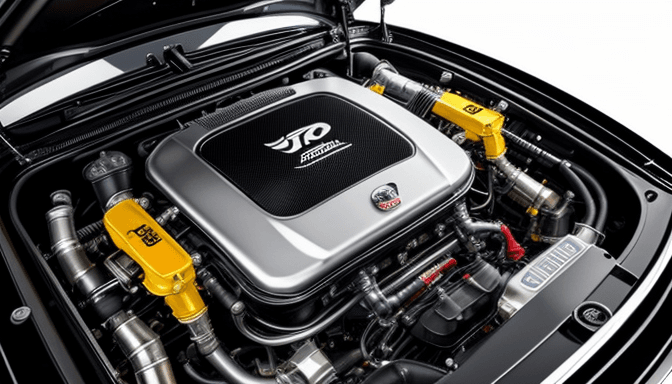
Essential Supporting Mods Before Increasing Boost
Before you even think about cranking up the boost on your 2JZ, there’s a crucial step many overlook: supporting mods. Think of it like building a house. You can’t just slap on a fancy roof without a solid foundation underneath. The same goes for your engine. Boost alone isn’t magic—it demands a strong, well-prepared setup to handle the extra pressure and heat. Without these upgrades, you’re basically asking for trouble.
First off, the fuel system needs a serious upgrade. Stock injectors and fuel pumps simply weren’t designed to feed the beast when you start pushing higher boost levels. If you don’t increase your fuel flow, you risk running lean, which can cause catastrophic engine damage. Upgrading to larger injectors and a high-flow fuel pump ensures your engine gets the right amount of fuel to match the extra air coming in. It’s like fueling a fire—you need enough wood to keep it burning strong, but not so little that it sputters out.
Next up, the intercooler. When you raise boost, the air entering your engine gets hotter. Hot air is less dense, which means less oxygen for combustion. An efficient intercooler cools this air down, giving you a denser charge, better power, and most importantly, reducing the risk of knock. Imagine trying to breathe through a hot, stuffy room versus a cool, fresh breeze—that’s the difference an intercooler makes.
Exhaust modifications also play a huge role. A restrictive exhaust can cause backpressure, choking your turbo and killing performance. Upgrading to a freer-flowing exhaust system helps your turbo spool faster and reduces exhaust gas temperatures. This not only boosts power but also keeps your engine cooler and happier under load.
Beyond these basics, don’t forget about stronger engine internals if you’re aiming for serious boost gains. Forged pistons, rods, and upgraded head studs can handle the extra stress and prevent costly failures. It’s like swapping out flimsy ropes for steel cables when you’re lifting heavier loads—necessary for safety and durability.
In short, jumping straight to higher boost without these supporting mods is like trying to win a race with flat tires. Sure, you might get moving, but you won’t last long. Investing in these upgrades not only keeps your 2JZ alive but sets the stage for smooth, powerful, and reliable performance. So, before you twist that boost knob, make sure your engine’s ready to play.
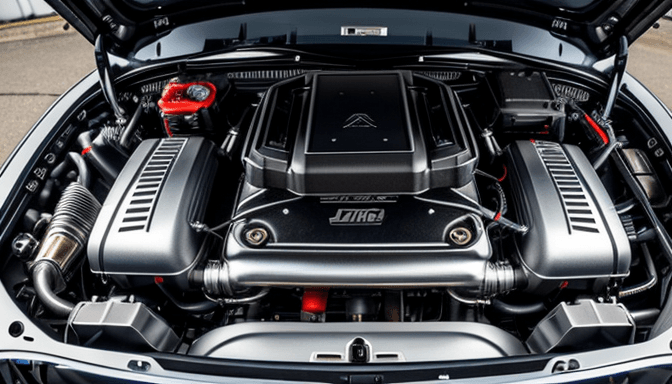
Best Practices for Boost Controller Setup and Tuning
When it comes to setting up your boost controller on a 2JZ, the goal is simple: keep your boost steady, predictable, and safe. But achieving that balance? It’s a bit like tuning a fine instrument. You don’t want sudden spikes that catch you off guard, nor do you want your boost to lag behind your throttle input. Both can hurt your engine or kill your fun on the road.
First off, understanding the type of boost controller you’re working with is key. Manual controllers give you direct control but require constant attention. Electronic controllers, on the other hand, offer precision and adaptability, adjusting boost on the fly based on RPM, throttle position, or even gear. If you’ve ever felt your boost jump unexpectedly, chances are your controller isn’t dialed in right.
One common mistake is setting your target boost too high too quickly. Think of it like turning up the volume on a speaker—if you crank it too fast, the sound distorts. Same with boost. Start low, then inch your way up. This gradual approach lets you monitor how your engine reacts and adjust tuning parameters accordingly.
Another crucial aspect is tuning your wastegate actuator and spring. Too stiff a spring can cause boost creep, where pressure rises beyond your set point. Too soft, and your boost might never reach the sweet spot. It’s a delicate dance that requires patience and sometimes trial and error. I remember tuning my own 2JZ setup—switching springs made a night-and-day difference in how smooth the boost curve felt.
Don’t overlook the importance of a good vacuum/boost line routing. Leaks or poorly placed lines can cause erratic boost behavior. Keep your lines short, tight, and free from kinks. It’s the little things that make a big difference.
When it comes to tuning, working with a professional or using a reliable piggyback or standalone ECU is a smart move. They help manage fuel delivery and ignition timing alongside boost control, preventing dangerous knock or lean conditions. Remember, boost control doesn’t happen in isolation—it’s part of a bigger system.
Finally, always keep an eye on your boost gauge during setup. If you notice any sudden spikes or drops, pause and troubleshoot before pushing further. Consistency is your friend here. A well-tuned boost controller will keep your 2JZ happy and healthy, letting you enjoy the power without the worry.
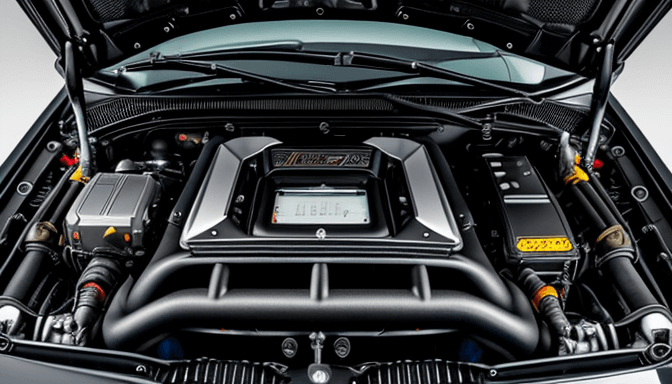
Monitoring AFR, Knock, and EGT for Safe Power Gains
When you’re cranking up the boost on your 2JZ, keeping a close eye on Air-Fuel Ratio (AFR), knock, and exhaust gas temperature (EGT) isn’t just smart—it’s essential. Think of these as your engine’s vital signs. Ignore them, and you’re basically driving blind, risking serious damage without even realizing it.
AFR is the balance between air and fuel in your combustion chamber. Too lean, and your engine runs hot, increasing the chance of knock and catastrophic failure. Too rich, and you waste fuel and lose power. It’s a delicate dance. For a boosted 2JZ, aiming for an AFR around 11.5 to 12.5 under load is usually safe, but this depends on your setup and fuel type. Running a wideband O2 sensor is your best friend here—it gives you real-time feedback, so you can adjust fueling before things go south.
Now, knock—also known as detonation—is the silent killer. It’s that nasty ping or knock sound caused by the air-fuel mixture exploding prematurely. This can quickly wreck pistons and rods. Modern knock sensors can detect these events early, but don’t rely solely on your car’s stock system. An aftermarket knock detection setup that alerts you or even cuts timing can save your engine from a costly rebuild. If you ever hear knocking under boost, pull the throttle immediately and recheck your tune.
Exhaust Gas Temperature (EGT) is another crucial gauge. High EGTs mean your engine is running too hot, often due to lean fueling or excessive ignition timing. Think of EGT like the engine’s thermometer—if it spikes, you’re pushing too hard. Consistently high EGTs can melt valves and damage turbochargers. Keeping EGTs in check ensures your 2JZ runs cooler and lasts longer.
Here’s a quick comparison table to keep these values in perspective:
| Parameter | Safe Range | Warning Signs | Potential Damage |
|---|---|---|---|
| Air-Fuel Ratio (AFR) | 11.5 – 12.5 (under boost) | Lean (12.5) | Engine knock, overheating, power loss |
| Knock | None detected | Knocking or pinging sounds | Piston damage, rod failure |
| Exhaust Gas Temp (EGT) | Below 1350°F (730°C) | Spikes above safe range | Valve damage, turbo failure |
In my experience tuning 2JZs, the moment you skip monitoring these signs, you’re flirting with disaster. It’s like flying a plane without instruments—you might get lucky once, but eventually, things go wrong. So, invest in quality gauges and sensors, and make it a habit to check them regularly. Your engine will thank you with years of reliable power and fewer headaches.
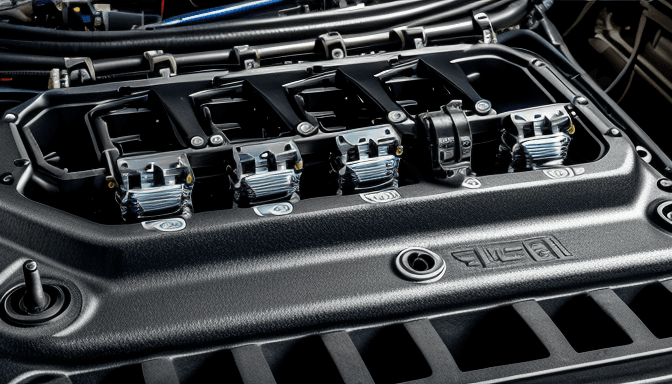
The Role of Head Studs, Gaskets, and Compression Ratio in Boost Safety
When you’re cranking up the boost on your 2JZ, the tiny details start to matter big time. Think of your engine like a pressure cooker. If the lid isn’t sealed tight or the pot isn’t built to handle the steam, things can blow up—literally. That’s where head studs and gaskets come into play.
Stock head bolts on a 2JZ-GTE were designed for factory boost levels. Push beyond those limits without upgrading, and you risk the head lifting slightly under pressure. This might sound harmless, but it can cause a leak in the combustion chamber, leading to blown head gaskets or worse, warped heads. Upgrading to high-quality head studs made from stronger materials ensures the cylinder head stays firmly clamped, even under intense boost pressure. It’s like swapping out flimsy screws for heavy-duty bolts—simple but crucial.
Now, the gasket itself is the unsung hero. It needs to seal the combustion chamber perfectly to prevent leaks of air, coolant, or oil. When you increase boost, the pressure inside the chamber spikes, and a stock gasket might not hold up. Using a multi-layer steel (MLS) gasket or a high-performance equivalent is essential. These gaskets can handle higher pressures and temperatures, maintaining that all-important seal.
But what about the compression ratio? This is the heart of the engine’s efficiency and safety under boost. A higher compression ratio means the engine squeezes the air-fuel mixture tighter, which can make power but also increases the risk of knock, especially when adding boost. Lowering the compression ratio gives you more headroom for boost without detonation, but it can make the engine feel a bit sluggish at low power levels.
Finding the right balance here is key. Many tuners drop the compression ratio slightly when planning big boost jumps, pairing that with stronger head studs and better gaskets. This trio works together to keep the engine safe and sound, even when the boost needle climbs.
Imagine trying to hold a balloon underwater—the more pressure you apply, the harder it gets to keep it down without popping. Your engine’s head studs, gaskets, and compression ratio are the hands keeping that balloon submerged. If any one of them fails, you’ll know about it fast.
So, before you dream of massive boost numbers, make sure your 2JZ’s foundation is solid. Strong head studs, reliable gaskets, and a sensible compression ratio aren’t just upgrades—they’re your insurance policy for a healthy, powerful engine.
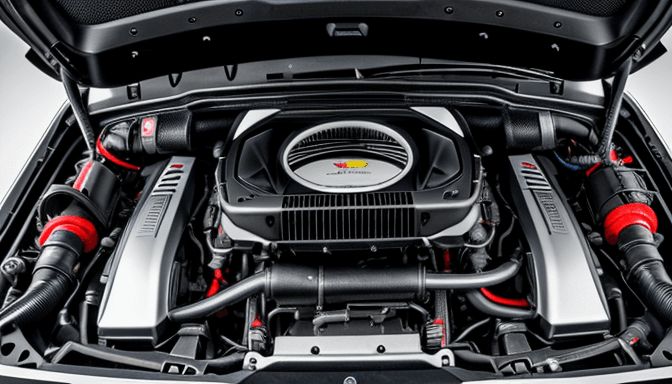
Choosing the Right Turbo Size and Efficiency to Avoid Overspeed and Surge
Picking the perfect turbo for your 2JZ isn’t just about grabbing the biggest or the flashiest unit on the market. It’s a delicate balance. Too small, and your turbo will struggle to spool up, leaving you frustrated with lag and limited power. Too big, and you risk pushing the turbo into overspeed territory, which can lead to premature failure—a costly mistake nobody wants. Think of it like picking shoes: too tight, and you’re uncomfortable; too loose, and you’re unstable. The same principle applies here.
Efficiency maps are your best friend when choosing a turbo. They show you how well a turbo performs at different pressure ratios and airflow rates. Imagine these maps as the turbo’s “comfort zone.” When your operating point sits comfortably inside this zone, your turbo runs smoothly and efficiently. But push it outside, and you’ll face surge or overspeed. Surge feels like a hiccup in the turbo’s airflow—an unstable back-and-forth that can cause serious damage over time.
Overspeed happens when the turbo spins faster than its design limits. It’s like revving a car engine beyond redline—eventually, something’s going to break. To avoid this, you want a turbo that matches your target boost pressure and airflow without forcing the turbine or compressor wheels to spin out of control. This often means picking a slightly larger turbo than you might initially think, but one that stays within its efficiency island at your planned power level.
Here’s a quick way to think about it: if you’re aiming for moderate boost on pump gas, a smaller, more responsive turbo might be your best bet. But if you’re chasing big numbers on E85 or race fuel, stepping up to a bigger, more efficient turbo can keep things safe and reliable. Overspeed and surge aren’t just theoretical risks—they’re real threats that can end your engine’s life prematurely.
Remember, turbo sizing isn’t a one-size-fits-all deal. It depends on your goals, fuel type, and how you plan to use the car. If you’re unsure, consulting a tuner or using software tools that plot your turbo’s efficiency map against your engine’s airflow needs can save you headaches down the road. After all, it’s better to have a turbo that breathes easy than one constantly gasping for air.
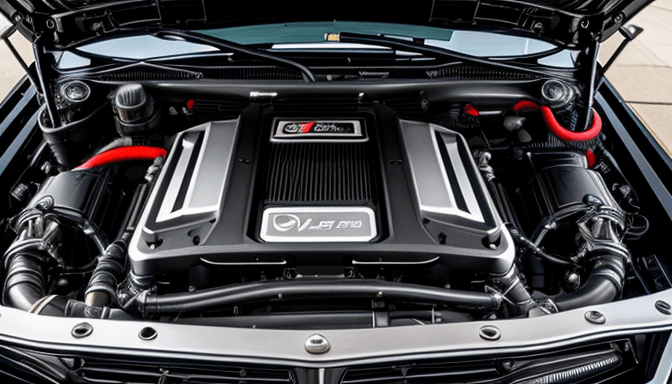
Diagnosing and Fixing Boost Spikes and Creep Issues
Boost spikes and boost creep might sound like technical jargon, but if you’ve ever felt your 2JZ engine suddenly surge with power in an unpredictable way, you’ve experienced their effects firsthand. These issues don’t just mess with your ride—they can seriously threaten your engine’s health if left unchecked. So, what exactly are they, and how do you tame these wild boost behaviors?
Boost spikes are sudden, sharp jumps in boost pressure that happen faster than your boost controller can react. Imagine pressing the gas pedal and the boost needle jumping like a startled cat—unexpected and jarring. This can cause a lean condition or even knock, putting your engine at risk. On the other hand, boost creep is more like a slow, sneaky rise in boost pressure that keeps climbing even after your wastegate is fully open. It’s like trying to hold back a flood with a cracked dam—eventually, that pressure gets out of control.
Diagnosing these problems starts with understanding your setup. For boost spikes, the culprit is often a wastegate that’s too small or a boost controller that isn’t responsive enough. If your wastegate can’t vent excess exhaust gases quickly, pressure builds up suddenly. For boost creep, the issue usually lies in the wastegate’s inability to bypass enough exhaust flow, or sometimes the turbo itself is oversized for your setup, choking the system.
Fixing these issues isn’t rocket science, but it does require attention to detail. First, make sure your wastegate is properly sized and functioning smoothly. A larger or more efficient wastegate can help vent excess pressure quickly, preventing spikes. Next, check your boost controller’s settings and responsiveness—electronic controllers with fast solenoids tend to handle spikes better than manual ones.
For boost creep, sometimes the fix means upgrading your wastegate to a higher flow model or even adding a secondary wastegate if you’re running a big turbo. Also, inspect your boost piping and intercooler setup—any restrictions or leaks can worsen boost creep. In some cases, dialing back your turbo size or adjusting your tuning can keep boost in check.
Here’s a quick overview of common causes and fixes:
| Issue | Common Causes | Practical Fixes |
|---|---|---|
| Boost Spikes | Small wastegate, slow boost controller response | Upgrade wastegate, use electronic boost controller, check solenoid |
| Boost Creep | Wastegate flow too low, oversized turbo, piping restrictions | Upgrade wastegate, improve piping, consider smaller turbo, retune ECU |
Remember, your 2JZ is a beast, but even beasts need the right gear to run smooth. Keeping an eye on boost behavior with a reliable gauge and logging data during runs can save you from nasty surprises. When in doubt, consult a tuner who knows the 2JZ intimately. Because in the world of boost, it’s all about balance—too much pressure too fast, or creeping up without control, can turn your power dream into a costly nightmare.
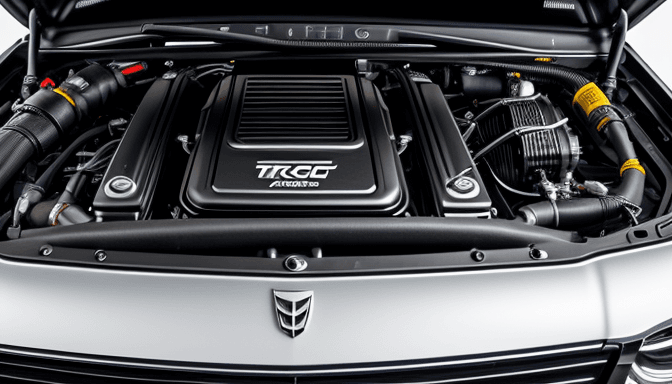
ECU Tuning Tips for Managing Higher Boost Levels Effectively
When it comes to cranking up the boost on your 2JZ, the ECU tuning isn’t just a step—it’s the heart of the whole operation. Think of the ECU as the brain that keeps everything running smoothly, especially when you’re pushing the engine beyond its stock comfort zone. Without proper tuning, higher boost can quickly turn from thrilling power gains into a costly engine nightmare.
First off, **fuel delivery** needs to be dialed in perfectly. More boost means more air, and more air demands more fuel to keep the mix balanced. Running lean under high boost is like playing with fire—literally. The ECU must be tuned to increase fuel injection duration and pressure to maintain a safe air-fuel ratio (AFR). This prevents dangerous detonation and keeps the engine happy. A good rule of thumb? Aim for an AFR around 11.5:1 to 12.5:1 under boost, but this can vary depending on fuel type.
Then, there’s **ignition timing**—a tricky but crucial piece of the puzzle. Advancing timing too much when the engine is under heavy boost can cause knock, which is a silent killer. On the flip side, too much retard and you lose power and efficiency. The ECU tuner’s job is to find that sweet spot where timing is optimized for power but still safe. This often means pulling timing slightly as boost climbs, especially on pump gas.
Don’t forget about **boost control** itself. The ECU needs to manage the wastegate precisely to avoid boost spikes or creep, both of which stress engine components. Modern standalone ECUs or piggyback systems give you the control to set smooth boost ramps, keeping pressure stable and predictable. This is where a well-mapped electronic boost controller shines, replacing the guesswork of mechanical setups.
One personal experience stands out: tuning a 2JZ on pump gas with a modest boost increase. Without proper ECU adjustments, the engine started knocking under load, and we had to dial back the timing and enrich the fuel map. It was a clear reminder that even small boost jumps demand careful ECU calibration. Rushing this step can cost you more than just power—it can cost you your engine.
Lastly, it’s wise to invest in **data logging** during tuning sessions. Monitoring knock sensors, AFRs, and EGTs in real-time lets you catch issues before they become disasters. The ECU’s adaptability is powerful, but it needs accurate inputs to keep your 2JZ running strong and safe under higher boost.
In short, effective ECU tuning for higher boost is a balancing act. Fuel, timing, and boost control must work in harmony. When done right, your 2JZ will reward you with smooth, reliable power gains—without the stress and risk. So, take your time, tune carefully, and listen to what your engine is telling you.
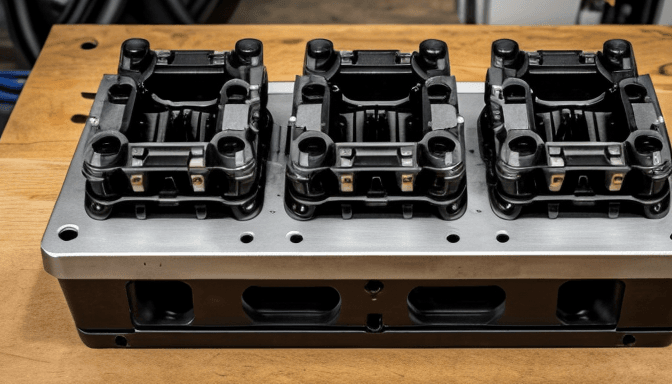
Safe Boost Targets for Different Fuel Types: Pump Gas, E85, and Race Fuel
When it comes to raising boost on your 2JZ engine, the type of fuel you use isn’t just a detail—it’s a game changer. Think of fuel as the foundation of a house: if it’s weak, the whole structure wobbles under pressure. Pump gas, E85, and race fuels each have their own quirks and strengths, and knowing their limits is key to keeping your engine happy and healthy.
Let’s start with the most common: **pump gas**. Most regular gasolines have an octane rating between 87 and 93. This limits how much boost you can safely run without risking knock—a sneaky enemy that can wreck your pistons. On pump gas, a 2JZ-GTE can usually handle around 10 to 12 psi of boost if everything else is stock or mildly upgraded. Push beyond that without proper tuning, and you’re flirting with disaster. I remember a buddy who cranked up his boost on regular gas—within minutes, the engine started pinging badly, and he had to back off fast.
Now, E85 is a whole different beast. With its higher octane rating (around 105-110) and cooling properties, E85 lets you safely run higher boost pressures. It’s like giving your engine a cold shower during a hot day. On E85, you can often push boost levels to 18 to 22 psi or even higher, depending on your setup. The catch? E85 burns differently and requires a richer tune, meaning your fuel system must be up to the task. Without that, you’re just asking for lean conditions and engine damage.
Then there’s race fuel, the premium choice for serious power seekers. Race fuels come with octane ratings well above 100, sometimes hitting 110 or more. This kind of fuel is like rocket fuel for your 2JZ, allowing you to safely run boost pressures north of 25 psi. But don’t get carried away—race fuel demands precise tuning, upgraded internals, and a solid cooling system. It’s not just about slapping in more boost; it’s about respecting the engine’s limits.
| Fuel Type | Typical Octane | Safe Boost Range (psi) | Key Considerations |
|---|---|---|---|
| Pump Gas | 87-93 | 10-12 | Risk of knock; requires cautious tuning |
| E85 | 105-110 | 18-22 | Needs richer tune; upgraded fuel system |
| Race Fuel | 100+ | 25+ | Precise tuning; upgraded internals & cooling |
So, what’s the takeaway? Don’t just chase boost numbers blindly. Instead, match your boost targets with the fuel you’re running. It’s like picking the right shoes for a marathon—you wouldn’t run a 10K in flip-flops, right? Same goes here. Respect your fuel’s limits, tune carefully, and watch your 2JZ thrive without breaking a sweat.
Frequently Asked Questions
- What is boost pressure, and why is it important for the 2JZ engine?Boost pressure is the amount of extra air your turbocharger pushes into the engine’s cylinders. Think of it as giving your engine a bigger breath to burn more fuel and make more power. For the 2JZ, understanding boost is crucial because pushing too much can lead to engine damage, but the right amount can unlock incredible performance.
- How much boost can a stock 2JZ-GTE handle safely?The stock 2JZ-GTE is surprisingly tough and can usually handle around 14-16 psi of boost reliably. Going beyond that without proper upgrades is like walking a tightrope—one wrong move and you risk costly engine damage. Always aim to stay within safe limits unless you’ve beefed up the engine.
- What supporting mods are essential before raising boost on my 2JZ?Before cranking up the boost, you’ll want to upgrade your fuel system, intercooler, and exhaust. Think of these mods as your engine’s safety net—fuel injectors keep up with demand, the intercooler cools the compressed air, and a free-flowing exhaust helps the turbo breathe. Skipping these is like trying to run a marathon in flip-flops.
- How do I prevent boost spikes and maintain stable boost levels?Boost spikes can be a sneaky enemy, causing sudden pressure surges that stress your engine. Proper boost controller setup and tuning are your best defense. Using a reliable boost controller and fine-tuning it ensures smooth, consistent boost—like cruise control for your turbo.
- Why is monitoring AFR, knock, and EGT critical when increasing boost?Air-Fuel Ratio (AFR), knock, and Exhaust Gas Temperature (EGT) are your engine’s vital signs. Monitoring these helps you spot dangerous conditions early—lean AFRs can cause overheating, knock damages pistons, and high EGTs indicate stress. Keeping these in check is like having a health monitor for your engine’s heart.
- Do I need to upgrade head studs and gaskets for higher boost?Absolutely. Stock head studs and gaskets can fail under high boost pressure, leading to leaks or catastrophic failure. Upgraded head studs clamp the head tighter, and stronger gaskets seal better—think of them as reinforced armor for your engine block.
- How does turbo size affect boost safety on the 2JZ?Choosing the right turbo size is like picking the perfect gear on a bike. Too small, and you’ll have lag; too big, and you risk overspeed and surge, which can wreck your turbo and engine. Matching turbo efficiency and size to your power goals keeps everything running smooth and safe.
- What are boost creep and boost spikes, and how can I fix them?Boost creep is when boost pressure rises uncontrollably at high RPMs, while boost spikes are sudden jumps in pressure. Both stress the engine. Fixes include installing a proper wastegate setup, checking for leaks, and tuning your boost controller carefully. It’s like tuning a musical instrument—small adjustments make a big difference.
- How important is ECU tuning when increasing boost on a 2JZ?ECU tuning is the secret sauce. It adjusts fuel delivery, ignition timing, and boost control to match your new setup. Without it, your engine is flying blind, risking knock and damage. A good tune makes your power gains smooth, reliable, and safe—like having a personal coach for your engine.
- What boost levels are safe for different fuel types like pump gas, E85, and race fuel?Fuel quality hugely affects safe boost limits. Pump gas usually supports moderate boost (around 14-16 psi), E85 can handle more thanks to its cooling properties (up to 20+ psi), and race fuels allow even higher boost levels. Always match your boost to your fuel to avoid knocking and ensure longevity.